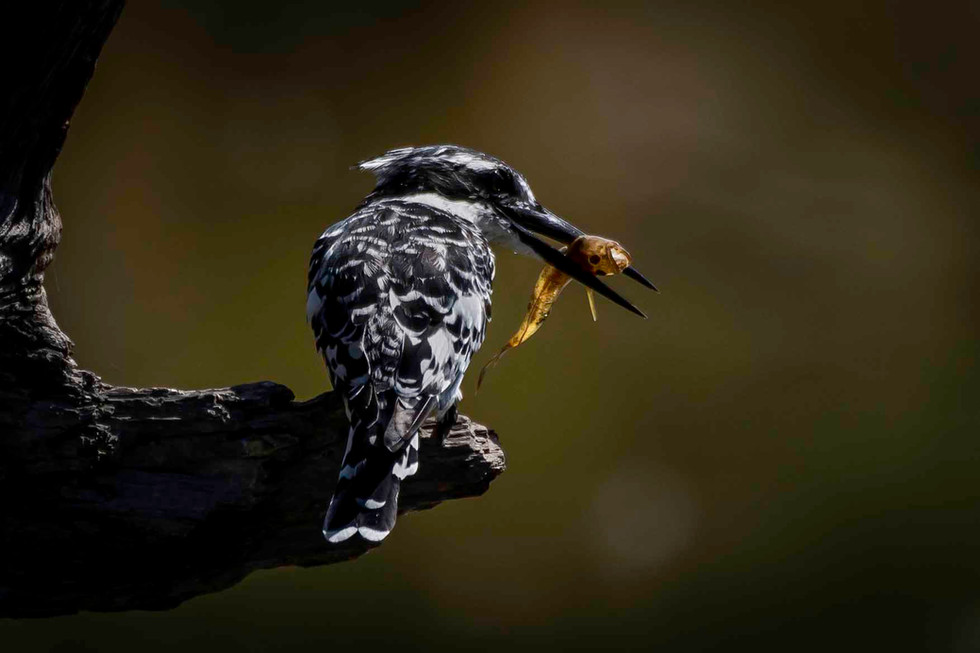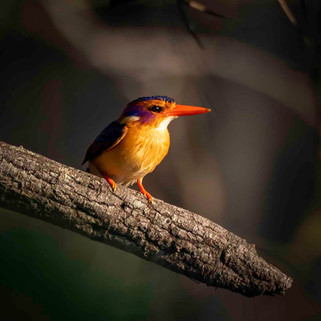7 Weeks in Kruger: The Wonders of Lake Panic
- KrugerExplorer
- Dec 19, 2018
- 4 min read
Updated: Feb 3, 2019
The Skukuza Rest Camp is the administrative and tourist heart of Kruger National Park. The local facilities are outstanding and game viewing regularly boasts Big 5 and other superb sightings, but it has undoubtedly come at a cost with the volume of both goods and visitor traffic on the main roads surrounding Skukuza perhaps stifling some of the magic of this area of the park.
Yet there is a very special place just nearby that always seems to retain its wonderment - Lake Panic and its outstanding bird hide.

An earthen dam was built across the Mafunyana Creek in 1975 and the lake is the resultant flood water. The curious name comes from the panic that ensued not long after the dam’s completion when a huge downpour created significant concern that the dam was at breaking point. Fortunately it held firm and the hide overlooking the western end of this large body of water is one of the premier locations for birding in the whole of Kruger National Park.
My 7 Weeks in Kruger trip offered the wonderful luxury of being able to invest some serious time at the hide and I spent several mornings and afternoons watching the very busy comings and goings of a huge range of bird species, plus a good helping of mammals and reptiles that also depend on the reliable waters of the lake.
So this post is very much for the birders and bird fans amongst our followers and I hope the following highlights of my sightings at the hide are enjoyable!
Most species of heron are wetland and shore birds and Lake Panic is a great place to see both common and the less often sighted herons. The grey heron is resident and a common sighting with the hide allowing superb close ups of this very large bird.

The green-backed heron (formerly known as the striated heron) is much smaller than its grey heron cousin.

It hunts by stalking prey in shallow waters, remaining completely still once a target has been sighted before stabbing its neck forward to grab the unwitting fish, frog or insect at an incredible speed.
In an earlier blog post I found I was unable to get a totally sharp image of the green-backed heron’s attack even at 1/8000th of a second exposure, such is the speed at which the neck is unleashed!
Very interestingly, this bird has been observed using insects as bait to lure fish to the surface of the water before striking - incredible nature doing its thing once again!
Similar in shape and size but very different in colour is the squacco heron.

This beautiful bird is not a common sighting in Kruger but Lake Panic is often one of the better places to try and find it.

Food typically consists of small fish and insects which are captured by a patient and very slow approach and extension of the neck before a short, sharp thrust grabs the target with the bill.
Egrets are mid-sized, generally white members of the heron family found across many African nature reserves.

The various species of egret can sometimes be difficult to tell apart but the bright yellow feet of the little egret is always a giveaway if you can catch one out of the water!
Kingfishers are among my favourite family of birds to see in the wild - they are very active and usually extremely beautiful, putting on a real show when they are hunting from a perch (that makes photography somewhat easier!)
The pied kingfisher is a common resident around Lake Panic and the local population was proving particularly successful at raiding the water’s fish stocks during my visits to the hide!
A real treat one morning was the appearance of an African pygmy kingfisher. I’d never seen one of these before and it's a rare sighting in Kruger. It is tiny at only 15cm long and 14g in weight but its vivid plumage and rosy cheeks are absolutely stunning!
Similarly beautiful but a more common sighting is the malachite kingfisher. Note how the malachite differs from the pygmy kingfisher by having a bold blue eyebrow and lacking the pinks and violets around the face.

Finally the stunning woodland kingfishers arrived just in time for my stay at Skukuza too.

This migratory bird makes a long journey to Southern Africa to avoid the intense heat and droughts of Central Africa, where it then returns to for the southern hemisphere winter.
The vivid blue and unusual bi-coloured black and red bill are beautiful and the bird's arrival is a welcome addition to Kruger’s wildlife.
The woodland kingfisher's excitable vocal call of a shriek followed by what often sounds like manic laughter is hard to miss once they have arrived too!
As an extension of a visit to the Lake Panic bird hide, it is well worth continuing along the S42 access road to the indigenous plant nursery, which has a small wetlands boardwalk next to it.

These two mini-habitats make excellent homes for birds and I was treated to a rare clear view of this red-chested cuckoo on the boardwalk.
Its distinctive call gives the bird its Afrikaans name of Piet my vrou, which translates into English as ‘Pete my wife’.
This name came from the French 18th century naturist and explorer, Francois Levaillant, who named the bird after his assistant Piet after he had killed a female specimen only to find they frequently encountered other red-chested cuckoos calling ‘Piet my vrou’ / ‘Pete my wife’ over and over in haunting revenge…!
I took a huge number of photos from Lake Panic - I counted more than 40 species of birds across several morning and afternoon visits to the hide, which is just an incredible total to achieve without having to move at all!
It truly is a wonderfully special place to visit and one of my absolute favourite places in Kruger National Park.

The next blog post will likely be a return to game driving and some pretty awesome sights around the Skukuza area so please check back in for it.
Or simply add your email address to our Learn More page for occasional email updates!
Thank you for reading and following - all comments or sharing of the blog on social media using the buttons below is is very much welcomed too!
Danny & Charlotte
www.krugerexplorer.com
www.krugerexplorer.com/blog
www.instagram.com/krugerexplorer
www.facebook.com/krugerexplorer














